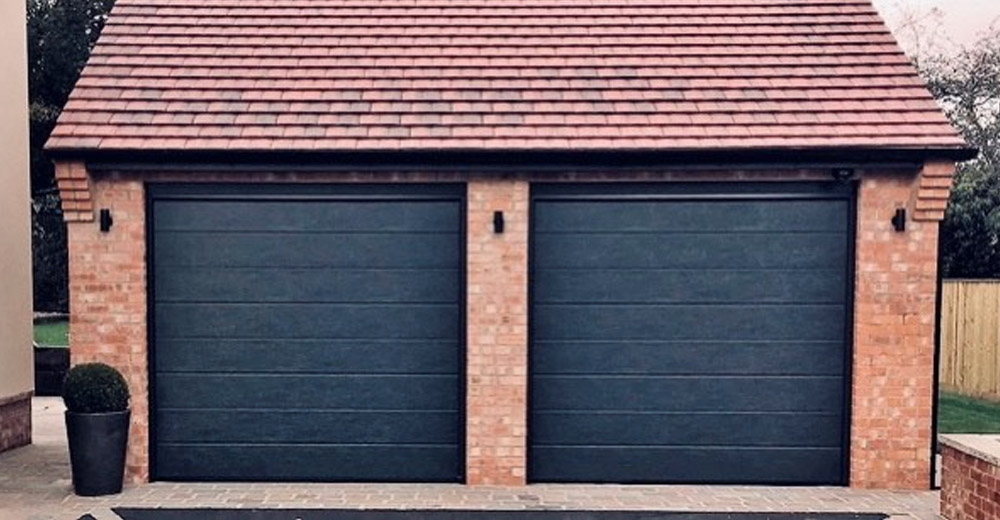A fully functional garage door is often taken for granted, yet it serves as a crucial component of domestic convenience and security.
From safeguarding your vehicles to providing an additional entry point to your home, the garage door’s importance is manifold.
However, like any other mechanical structure, it is susceptible to wear and tear, not to mention occasional malfunctioning. When problems arise, they can cause significant disruptions to your daily life. Hence, this blog aims to serve as an invaluable guide, highlighting common issues you might face and offering practical solutions to address them.
Identifying Common Garage Door Problems
The Door Won’t Open or Close
If your garage door is stubbornly refusing to either open or close, you’re undoubtedly facing quite a nuisance. This issue could be attributable to various factors ranging from electrical hitches in the motor to remote control malfunctions. In certain situations, mechanical components like springs and cables might also be at fault. Pinpointing the cause is crucial for successful resolution.
The Door Makes Unusual Noises
An opera of noises emanating from your garage door—be it squeaks, grinds, or rattles—indicates that all is not well. This cacophony is usually a red flag signalling that certain components are either worn out or require lubrication. In some instances, the noise may also arise from loose parts. An aural inspection can provide significant clues for further troubleshooting.
The Door is Off its Tracks
Discovering your garage door off its tracks can be rather unsettling. This misalignment can occur due to obstruction in the track or even due to the impact from a vehicle. In some cases, wear and tear could lead to the door slipping off its tracks. Regardless of the cause, this issue demands immediate attention to prevent further damage and ensure safety.
Slow Response Time
If your garage door appears to be dilly-dallying, taking its sweet time to open or close, it’s not just an inconvenience but could be a symptom of an underlying issue. Delays can occur due to sensor issues, worn-out components, or even electrical problems. A response time longer than 2-3 seconds after activating the opener merits an investigation.
Basic Troubleshooting Steps
Checking for Obstructions
Before you delve into more complicated matters, it’s wise to check for physical obstructions in the tracks or sensors. Often, small objects or debris can interfere with the door’s operation. Additionally, ensure that the sensors are aligned correctly. A quick clean and adjustment might be all that’s needed to get your garage door back in working order.
Testing Remote and Manual Controls
The next logical step is to examine the remote and manual controls. Begin by replacing the batteries in the remote control. If the problem persists, ensure that the manual control functions adequately. If neither works, then the issue likely lies elsewhere—perhaps in the electrical wiring or the motor itself.
Lubricating Moving Parts
A well-oiled machine runs smoother, and your garage door is no exception. Make it a point to regularly lubricate the moving parts of the door mechanism, such as the rollers, hinges, and tracks. Utilise silicone-based lubricants for optimal performance. This simple act can not only reduce noise but also prolong the lifespan of these components.
How to Fix Specific Problems
Resetting the Remote Control
If you suspect that the remote control is the culprit, a simple reset might do the trick. Consult your user manual for reset instructions, which usually involve holding down a particular set of buttons for a specified duration. Once reset, reprogram the remote and test it to see if normalcy is restored.
Tightening Loose Parts
Loose nuts, bolts, and screws can lead to operational hitches and those troubling noises. With the appropriate tools in hand, such as wrenches and screwdrivers, go through each component and ensure it’s tightly fastened. Remember to switch off the power supply to the garage door mechanism before you embark on this exercise for safety reasons.
Aligning the Door Tracks
Misaligned tracks can make your garage door wobble, get stuck, or even fall off entirely. Using a level, confirm if the tracks are aligned properly. If not, loosen the brackets, adjust the tracks, and then retighten the brackets. The aim is to have the tracks parallel to each other and perpendicular to the floor.
Replacing Worn-Out Parts
Springs, cables, and rollers have a limited lifespan and are common culprits when it comes to garage door issues. If these parts appear worn or frayed, it’s advisable to replace them. Note that replacing springs and cables involves a high level of tension and can be hazardous; thus, for such tasks, it might be better to call in a professional.
When to Call a Professional
There are circumstances where a do-it-yourself approach is either insufficient or inadvisable. Issues like a malfunctioning motor, broken springs, or complex electrical problems should be left to the experts.
Moreover, if you’ve tried the troubleshooting steps listed above with no success, it’s time to seek professional assistance. Choose a qualified garage door repair service, ideally one with good reviews and reasonable pricing, to ensure that your garage door is in capable hands.
Conclusion
Garage doors are prone to a variety of issues that can range from mildly irritating to downright hazardous. Understanding the common problems you may encounter and how to address them is the first step in ensuring your garage door serves you well for years to come.
Moreover, regular maintenance can pre-empt many of these issues, saving you both time and effort in the long run. So the next time your garage door decides to act up, you’ll be well-equipped to tackle the problem head-on.
At Darby Door Systems, we provide commercial and domestic garage door installation. Get in touch with us today for more information.

